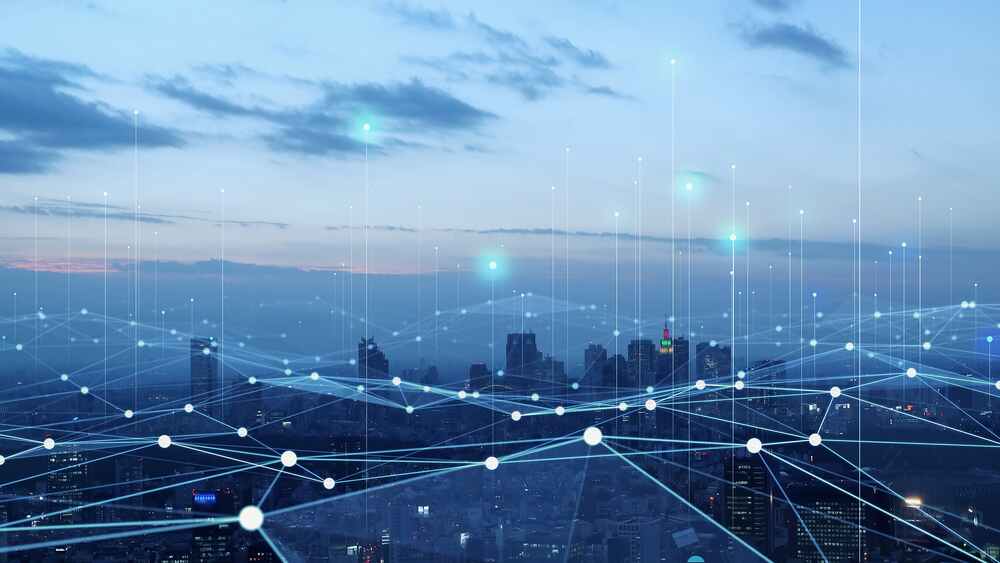By 2026, there will be more than 26 billion linked devices on the planet. Although there is great potential, there is also a significant risk. How are those billions of devices kept safe? What about the networks that they utilize? How can you ensure that none of those devices’ data is compromised? Read on to learn more.
Contents
What is the Internet of Things?
The “Internet of Things” refers to the overall network of interconnected devices and the technology that enables communication between them and the cloud. There are now billions of devices connected to the internet due to the development of low-cost computer chips and high bandwidth telephony. It implies that everyday gadgets like cars, vacuum cleaners, and robots might deploy sensors to gather data and respond directly to humans.
The Internet of Things connects generally utilized “things” to the web. Since the 1990s, computer engineers have started incorporating sensors and CPUs into everyday items.
RFID tags, which are small, low-power computer chips, were initially deployed to track expensive machinery. These processors evolved throughout time to become smaller, quicker, and more competent as computer devices shrank in size.
The cost of incorporating processing power into small items has decreased significantly in recent years. MCUs with inbuilt RAM of less than 1MB, such as those used in light switches, can enable communication with Alexa speech services capabilities, for instance. The goal of equipping our homes, businesses, and offices with IoT devices has given rise to an entire sector. Automatic data transmission to and from the internet is possible with these intelligent objects. The term “Internet of Things” refers to both the collection of all these “invisible computing devices” and the related technologies.
What are some applications of deploying IoT applications?
A wide range of applications is being driven by the IoT’s capacity to both enable and deliver sensor data as well as device-to-device communication. The most well-known applications and their functions are listed below.
- Utilize machine monitoring and product-quality monitoring to increase manufacturing efficiencies: To ensure that machines are operating within the necessary tolerances, they can be continuously evaluated and monitored. Real-time product monitoring is another option for finding and fixing quality issues.
- Enhance the “ring-fencing” and tracking of physical assets: Businesses can rapidly locate assets thanks to tracking. They can ensure that high-value assets are safeguarded against theft and removal by using ring-fencing.
- Use wearables to keep an eye on environmental conditions and human health metrics: IoT wearables allow patients to be remotely monitored by doctors and help consumers understand their own health better. Additionally, thanks to technology, businesses can monitor the health and safety of their personnel, which is particularly helpful for those who work in dangerous environments.
- Improve existing processes to create new opportunities and efficiencies: One illustration of this is the use of IoT to improve linked logistics for fleet management in terms of efficiency and safety. Businesses may enhance productivity by directing trucks in real-time using IoT fleet monitoring.
- Facilitate adjustments to business processes: The use of IoT gadgets for linked assets to observe the health of distant machinery and initiate service calls for preventive maintenance is an illustration of this. The capacity to remotely monitor equipment is also opening up new product-as-a-service business models, in which clients pay to use a thing rather than purchase it.
How does IOT exactly work?
The Internet of Things (IoT) is an ecosystem consisting of smart devices that are web-enabled and make use of embedded systems, such as sensors, processors, and communication gear, to gather and respond on the basis of the data they receive from their surroundings. IoT devices exchange the sensor data they receive by connecting to an edge device or an IoT gateway, which transfers the data to the cloud for analysis or performs the analysis locally. These gadgets occasionally interact with similar devices, acting on the data they exchange. Although people can use devices to set them up, give them instructions, or retrieve data, the gadgets accomplish most of the job without their help. The networking, connectivity, and communication protocols of web-enabled devices are significantly influenced by the IoT applications that have been implemented. IoT can also use artificial intelligence (AI) and machine learning to make the process of data collection simpler.
Growth of IoT
Sensor technology, integrated into IoT devices, will continue to become increasingly affordable, sophisticated, and accessible. This will make it easier and cheaper to use sensors for new things, like a wide range of monitoring and detection tasks. In contrast, over the previous 15 years, processing power has increased by nearly 100 times. As a result, activities can be shifted away from local devices and toward cloud and edge computing solutions. This can be done using artificial intelligence applications and real-time analytics. Additionally, the introduction of 5G will open up new applications for experiences like virtual and augmented reality and enhance mobile connectivity.
Lastly, the need to link existing IT equipment to the IoT will propel the IoT market’s expansion. Traditional connected IT devices are growing at a moderate pace—2% annually. However, a massive market for device integration is indicated by the installed base of more than 5 billion smartphones, 2 billion personal computers, and 1 billion tablets.
What Are Network Services?
The digital ecosystem and landscape are evolving quickly to keep up with the ongoing development of connectivity, communication infrastructure, and next-generation use cases. The foundation of digital enterprises is now advanced connection, with organizations emphasizing extending bandwidth and looking into ways to modernize their networks. Furthermore, the inclusion of more touchpoints to accommodate limitless use cases has resulted in networks becoming more heterogeneous as a result of digitization.
However, keeping up with this rapid innovation without compromising security or performance can be tedious. It might impact your current workflow. Therefore, a more feasible choice would be to hire network services. They will help you:
- Deploy networks efficiently with low-cost and high quality
- Secure your existing network with various monitoring tools
- Analyze your current network infrastructure and suggest improvements to make it more robust
Their benefits include:
- Better cost management
- Increased security
- Reduced responsibility
- Increased ROI
How do they work?
Network solution stitching is a critical component of digitized networks that involves planning, designing, building, and operating modern networks, which can be complex and require specialized skills and expertise. Network Services offer end-to-end system integration and tailored network solutions for various technologies, including data centers, cloud computing, and network infrastructure. In addition, they provide a next-generation software-defined network to enable seamless connectivity and a continuous user service experience in open, multi-vendor, and disaggregated network environments.
What is IoT Security?
IoT security cannot be an add-on or an afterthought. Security must be included from the beginning. The security requirements for IoT are distinct. Device connectivity is distinct from linking specific individuals to personal computers. An IoT device cannot simply input a password as a person would in order to confirm its identification. Similar to how our PC operating systems receive frequent updates, the Internet of Things must operate constantly. For applications that are mission-critical, a reliable infrastructure is essential. This dependability is provided by 3GPP technology. As the Internet of Things grows quickly, security must be end-to-end.
What are the different influencing factors for IoT security?
- Decisions based on data require trustworthy data: Data is being used more and more to inform important business, safety, and health choices. Data must be accurate and secure in order to make the appropriate judgments.
- Different problems call for various solutions: Devices come in a variety of sizes and shapes. Some gadgets are severely limited in their capabilities, making it impossible to employ typical security measures on them.
- Security for entire ecosystems: Success in the Internet of Things (IoT) depends on cooperative ecosystems of device makers, network providers, platform providers, app developers, and end users. It is essential to guarantee the ecosystem’s complete security.
Conclusion
Due to growing urbanization, it is now more important than ever to plan, design, build, and sustainably manage resources. To build smart cities, you need to take a balanced approach to things like updating city infrastructure and using technology to improve the capacity and efficiency of city services.
In a future where almost everything needs to be connected, there really can’t be a “one size fits all.” Enterprises today provide specialized design, build, and management services for your digital ecosystem. They use the best technological partnerships and their expertise in solution engineering to build networks that set new standards.














